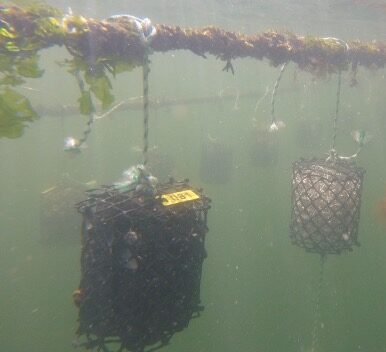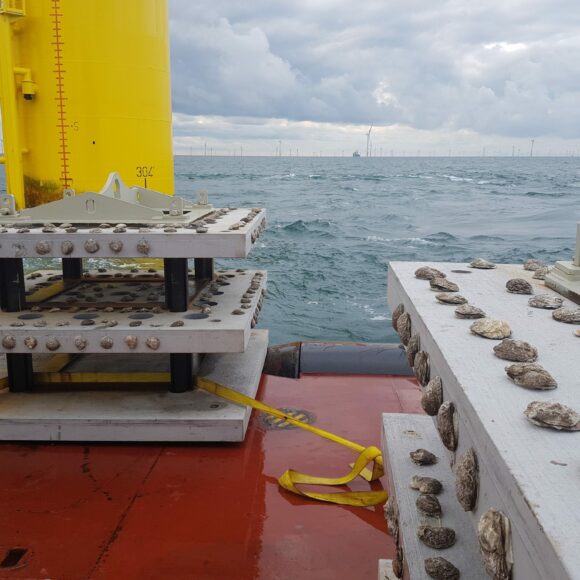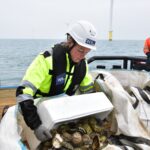Eco-friendly scour protection at the Borssele offshore wind farm (Site V)
Objectives
The project aims to enhance natural habitats in offshore wind farms, with a particular focus on the European flat oyster, by developing and testing various eco-friendly scour protection designs and oyster reinstatement methods.
Short description
In 2019, Van Oord, Wageningen Marine Research, Waardenburg Ecology and other Dutch organisations launched a pilot project titled Ecoscour at the Borssele Offshore Wind Farm (Site V)The Borssele Offshore Wind Farm (site V) is located 22 km away from the Dutch coast. Its purpose is to test innovative design technologies and comprises of two wind turbines with a total installed capacity of 18 MW in the Netherlands, designated as a testing site for innovative technologies. Scour protection is usually installed at the base of offshore wind turbines to stabilise the foundations and protect the seabed against erosion. This project studied different scour protection materials aimed at enhancing marine life within offshore wind farms. Materials such as granite, marble and concrete were tested to encourage the settlement of flat oyster spat in an oyster pond in Ireland, at nearshore areas in Ireland (Tralee Bay), and in the Netherlands (Lake Grevelingen). Additionally, broodstock structures were designed and placed on the scour protection to support larvae production and initiate the oyster reef development. Spat on shell, collected in Tralee Bay (Ireland), was also deployed in cages.
European flat oysters (Ostrea edulis) are native to the North Sea. Over a century ago, oyster reefs covered one-fifth of the Dutch North Sea, but they were devastated by overfishing, habitat destruction and disease. The ban of bottom-trawling in Dutch offshore wind farms offers an excellent opportunity to restore these habitats. Oyster reefs can enhance water quality and provide food, shelter and spawning grounds for various species, including crabs, lobsters, shrimp, fish, and benthic flora and fauna. The native oysters used in the project were sourced from a disease-free area in Ireland, and researchers ensured that no invasive species were present before introducing them to the test site. This methodology for procuring and placing oysters in scour protection has provided valuable insights for future oyster reef restoration projects.
Ecological monitoring has been conducted at the offshore site, where researchers studied oyster reef development throughout the project’s stages. This process involved lifting structures from the sea, collecting samples on the vessel, and sending them to laboratories for detailed analysis. ROV footage was also captured during the lifting process. So far, vertical surfaces on broodstock structures have shown better oyster survival rate, while horizontal surfaces have experienced sedimentation. Squared heavy broodstock structures were considered less optimal due to their weight and the risks posed to installation vessels for their pointed edges. The next phase of the project will focus on using lighter and smoother structures. Adult broodstock was observed to grow and reproduce and spat on shell has exhibited growth. The best settlement substrate for oyster larvae was granite (Ter Hofstede at al., 2024). Tests with different rock materials indicate that the use of a mixture of scour rock material could enhance the functional diversity of the benthic fauna (Kingma et al., 2024). The project monitoring is set to end in 2028, and the broodstock structures will then be decommissioned.
Criteria for selection: 1+2+3+4 (a) + 5
Information updated on: 3 September 2025



